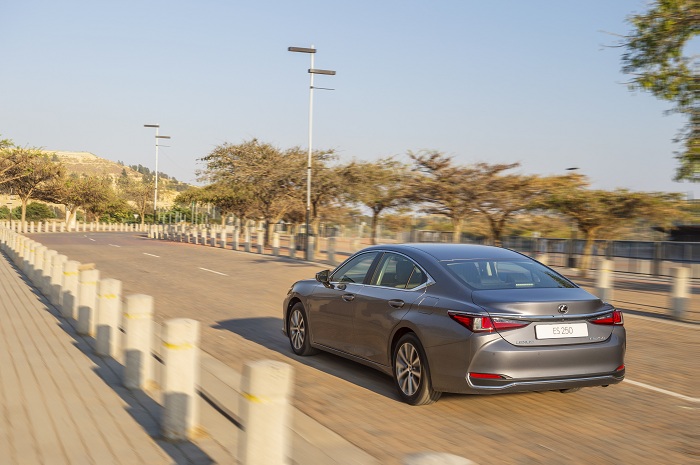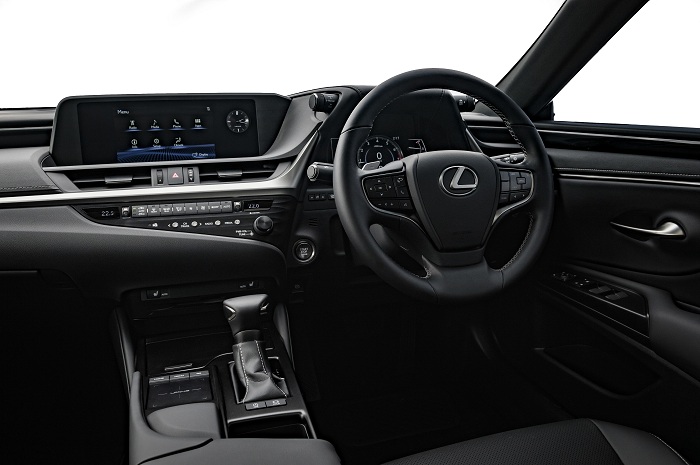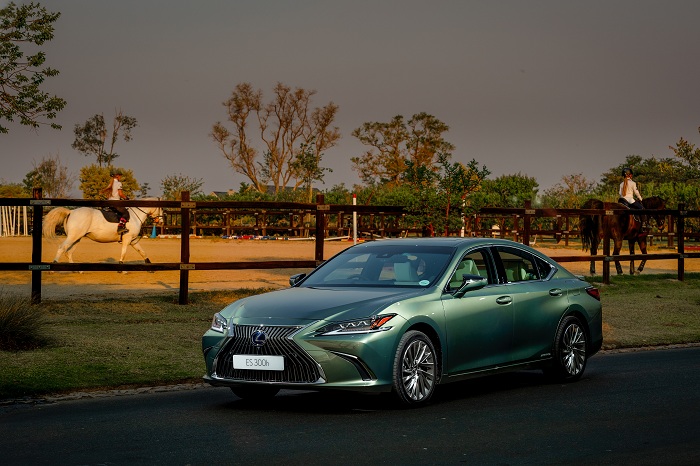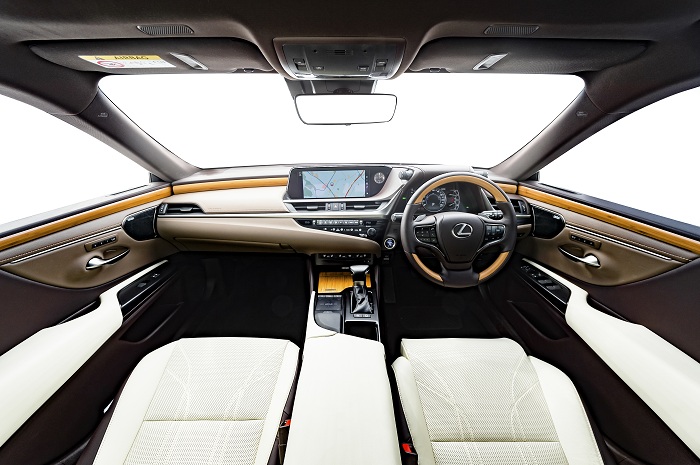Lexus has now given the ES new suite and I got back behind the wheel of this, the seventh generation model, to see if it has retained its appeal.
So what is the ES?
Effectively the replacement for the now discontinued GS, the ES slots in neatly between the IS and LS in the brand’s luxury sedan line-up, and apart from its new attire, come underpinned by a new platform in the form of Lexus’ front-wheel drive Global Architecture-K (GA-K). This means that the ES is both longer (+65mm) in overall length and wheelbase (+50mm) than its predecessor, as well as being wider (+45mm) and a tad lower (-five millimetres).
Styling

Lexus’ designers are strangers to featuring sharp, dominant and striking designs on their cars and the ES continues this design language. Up fron, the now signature Spindle Grille catches the eye due to its size and chrome detailing on the edges.
Slim headlights with the now customary daytime running LEDs also gives the car a noticeable presence. From the side, the ES features a sleek look thanks to a lower roof line and neat character lines. The rear however is by far the most striking with a fastback-like appearance similar to the LS, and L-shaped LED taillights. In addition to the standard ES, Lexus is offering a hybrid model that comes with extra touches such as bigger wheels, a subtle boot spoiler an full LED headlights.
The lap of luxury
Inside the ES, one can expect to find a spacious cabin and lots of luxury. It is full of quality materials which give the car a solid feel. I was particularly impressed by how quiet the cabin was while driving.
Aside from the leather trim and soft touch plastic, the cabin is especially spacious with ample head-and-leg room both front and rear. The hybrid model feature some added luxuries such as wood trim, even on the steering wheel and rear climate.
Technology

In its entry-level EX guise, equipment on the ES includes items such a 12.3-inch infotainment system, heated front seats, a tilt-sliding/opening sunroof and a three mode Drive Mode Selector (Eco, Normal and Sport), the hybrid SE version adds the aforementioned wood trimmed steering wheel that is also heated, four-way lumbar support for the front seats, a colour Heads-Up Display and a and a 17-speaker Mark Levinson sound system.
On the safety side, both models receive ten airbags with the SE also receiving Lexus’ Safety System+ that includes items such as Lane Keeping Assist, Blind Spot Monitor, Adaptive Cruise Control, Lane Departure Warning, Adaptive High Beam Assist and Pre-Crash Assist with Pedestrian Detection.
The Drive

Out on the road, the ES keeps reputation of being a comfortable cruiser helped in part by its new underpinnings. At the local media launch held in Cape Town, I spend most of the time behind the wheel of the EX-spec ES 250, whose normally aspirated 2.5-litre four-cylinder develops 152kW/243Nm and comes mated to a brand-new eight-speed Direct Shift automatic gearbox.
Opt for the SE, and you will get the ES 300h that features the same engine, but with the addition of an electric motor for a total output of 160kW. Connected to a CVT, Lexus claims a combined consumption for this model of 4.6-litres/100km.

As to be expected, the ES is no speed machine but then again, it was never designed to be. Instead, it is smooth and rates as the sort of car that encourages you to take it easy after a hard day.
Verdict
After spending some time with the new Lexus ES, I must say that it remains a quality product. It is packed with features and safety systems. It is a large car that prefers to waft along rather than to be hustled, but if needs, it can get a move on. Counting in its favour is the price, which at R593 300 for the EX and R843 800 for the SE, makes it a bargain compared to the German and British alternatives.
















